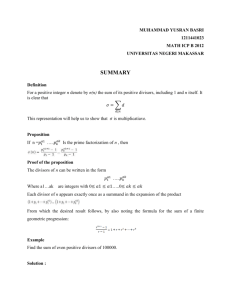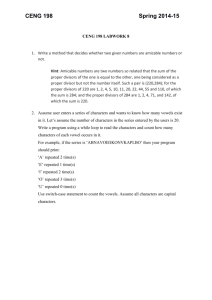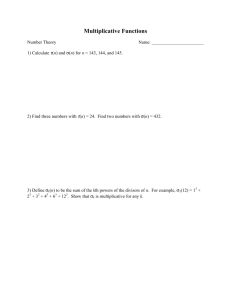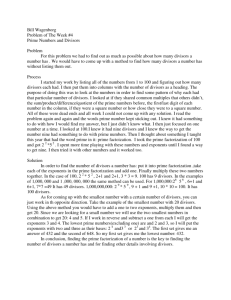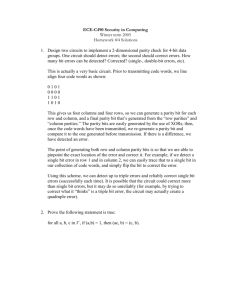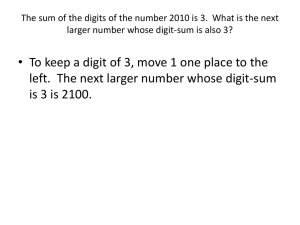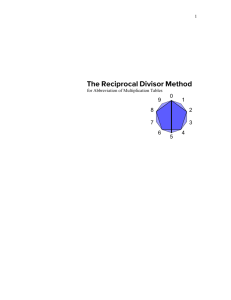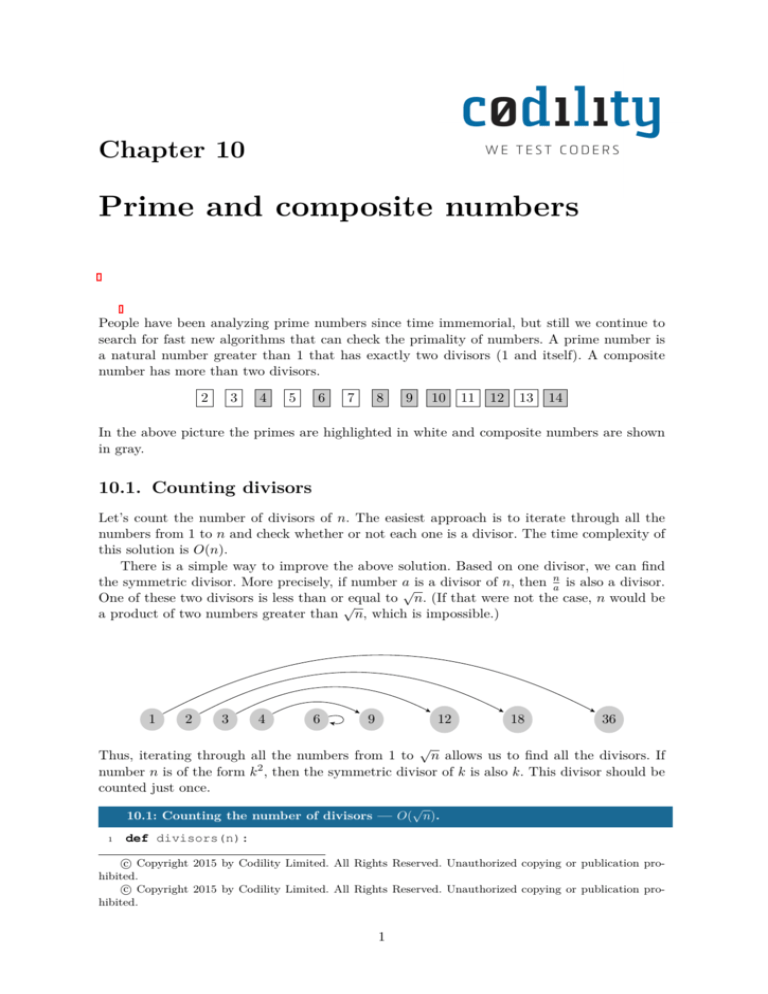
Chapter 10
Prime and composite numbers
People have been analyzing prime numbers since time immemorial, but still we continue to
search for fast new algorithms that can check the primality of numbers. A prime number is
a natural number greater than 1 that has exactly two divisors (1 and itself). A composite
number has more than two divisors.
2
3
4
5
6
7
8
9
10
11
12
13
14
In the above picture the primes are highlighted in white and composite numbers are shown
in gray.
10.1. Counting divisors
Let’s count the number of divisors of n. The easiest approach is to iterate through all the
numbers from 1 to n and check whether or not each one is a divisor. The time complexity of
this solution is O(n).
There is a simple way to improve the above solution. Based on one divisor, we can find
the symmetric divisor. More precisely, if number a is a divisor of n, then na is also a divisor.
√
One of these two divisors is less than or equal to n. (If that were not the case, n would be
√
a product of two numbers greater than n, which is impossible.)
1
2
3
4
6
9
12
18
36
√
Thus, iterating through all the numbers from 1 to n allows us to find all the divisors. If
number n is of the form k 2 , then the symmetric divisor of k is also k. This divisor should be
counted just once.
√
10.1: Counting the number of divisors — O( n).
1
def divisors(n):
c Copyright 2015 by Codility Limited. All Rights Reserved. Unauthorized copying or publication pro
hibited.
c Copyright 2015 by Codility Limited. All Rights Reserved. Unauthorized copying or publication pro
hibited.
1
2
3
4
5
6
7
8
9
10
i = 1
result = 0
while (i * i < n):
if (n % i == 0):
result += 2
i += 1
if (i * i == n):
result += 1
return result
10.2. Primality test
The primality test of n can be performed in an analogous way to counting the divisors. If we
find a number between 2 and n − 1 that divides n then n is a composite number. Otherwise,
n is a prime number.
√
10.2: Primality test — O( n).
1
2
3
4
5
6
7
def primality(n):
i = 2
while (i * i <= n):
if (n % i == 0):
return False
i += 1
return True
We assume that 1 is neither a prime nor a composite number, so the above algorithm works
only for n ­ 2.
10.3. Exercises
Problem: Consider n coins aligned in a row. Each coin is showing heads at the beginning.
1
2
3
4
5
6
7
8
9
10
Then, n people turn over corresponding coins as follows. Person i reverses coins with numbers
that are multiples of i. That is, person i flips coins i, 2 · i, 3 · i, . . . until no more appropriate
coins remain. The goal is to count the number of coins showing tails. In the above example,
the final configuration is:
1
2
3
4
5
6
7
8
9
10
Solution O(n log n): We can simulate the results of each person reversing coins.
10.3: Reversing coins — O(n log n).
1
2
3
4
5
6
7
def coins(n):
result = 0
coin = [0] * (n + 1)
for i in xrange(1, n + 1):
k = i
while (k <= n):
coin[k] = (coin[k] + 1) % 2
2
8
9
10
k += i
result += coin[i]
return result
The number of operation can be estimated by n1 + n2 + . . . + nn , what equals n · ( 11 + 12 + . . . + n1 ).
The sums of multiplicative inverses (reciprocals) of the first n numbers are called harmonic
numbers, which asymptotically equal O(log n). In summary, the total time complexity is
O(n log n).
Solution O(log n): Notice that each coin will be turned over exactly as many times as the
number of its divisors. The coins that are reversed an odd number of times show tails, meaning
that it is sufficient to find the coins with an odd number of divisors.
We know that almost every number has a symmetric divisor (apart from divisors of the
√
form n). Thus, every number of the form k 2 has an odd number of divisors. There are
√
√
exactly b nc such numbers between 1 and n. Finding the value of b nc takes logarithmic
time (or constant time if we use operations on floating point numbers).
Every lesson will provide you with programming tasks at http://codility.com/programmers.
3

